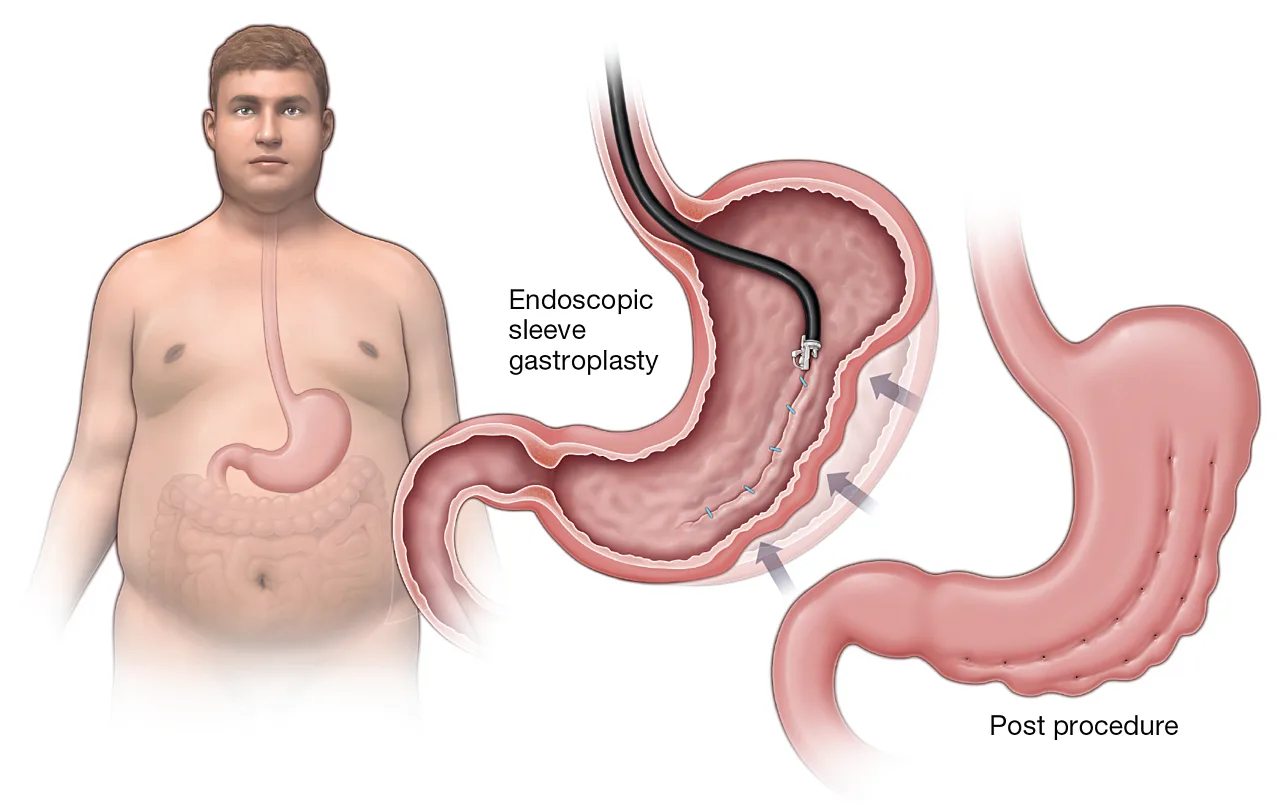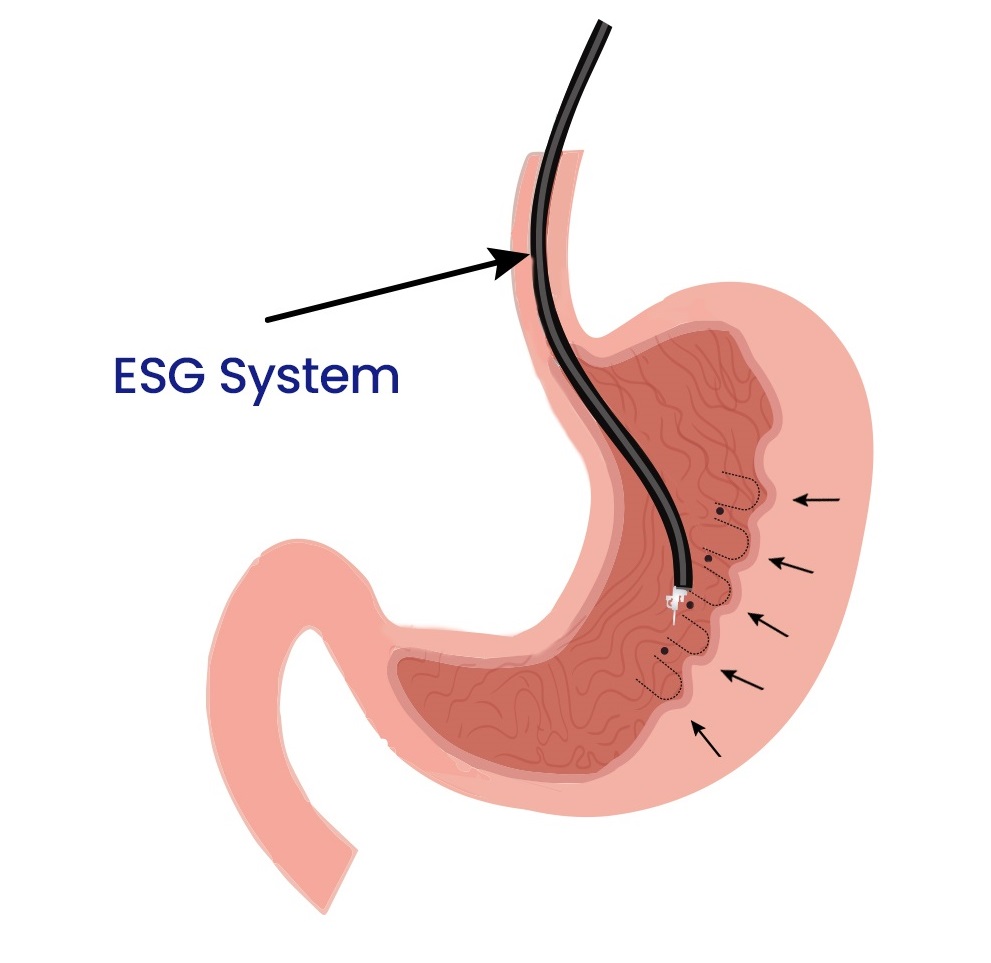What is Endoscopic Sleeve?
The Endoscopic Sleeve, also known as Endoscopic Sleeve Gastroplasty (ESG), stands as a pivotal advancement in the realm of minimally invasive bariatric procedures. Employing internal suturing techniques effectively diminishes stomach size, akin to the outcomes of surgical sleeve gastrectomy. This nonsurgical approach offers a promising avenue for individuals seeking substantial weight loss and enhancements in their overall health.
Moreover, the procedure's minimally invasive nature underscores its appeal, as it circumvents the complexities and risks associated with traditional surgical interventions. Through precise internal suturing, ESG facilitates significant weight reduction and fosters improved metabolic health, rendering it a valuable option in the spectrum of weight management strategies.

How does it Work?
The endoscopic stomach-sewing procedure, performed without the need for any external incisions, represents a significant advancement in minimally invasive bariatric interventions. Conducted under anesthesia, the procedure typically lasts between 1 to 1.5 hours, with patients requiring only a short hospital stay of about 1 day. Through the insertion of an endoscope, equipped with a camera and a suturing device, into the stomach via the throat, the surgeon marks the orientation of the stomach to guide the procedure. Subsequently, 5 to 8 sutures are tightly placed to reduce the horizontal diameter and vertically shorten the length of the stomach from within, resulting in a remarkable 70% reduction in its volume.
The endoscopic stomach-sewing procedure, performed without the need for any external incisions, represents a significant advancement in minimally invasive bariatric interventions. Conducted under anesthesia, the procedure typically lasts between 1 to 1.5 hours, with patients requiring only a short hospital stay of about 1 day.
Through the insertion of an endoscope, equipped with a camera and a suturing device, into the stomach via the throat, the surgeon marks the orientation of the stomach to guide the procedure. Subsequently, 5 to 8 sutures are tightly placed to reduce the horizontal diameter and vertically shorten the length of the stomach from within, resulting in a remarkable 70% reduction in its volume.
SLEEVE GASTROPLASTY (ENDOSCOPIC) Vs GASTRIC SLEEVE (LAPAROSCOPIC)
The endoscopic sleeve gastroplasty, a minimally invasive procedure, typically leads to around 15% weight loss, which is less effective compared to the more invasive laparoscopic sleeve gastrectomy, which can result in up to a 35% weight reduction. One advantage of the endoscopic method is its reversibility – the sutures used to reduce stomach size can loosen over time, allowing the stomach to return to its original shape and size based on eating habits. This approach is considered safer and less invasive than traditional bariatric surgery, as it doesn't alter the natural digestion process.


FAQs
Obesity surgeries are evaluated based on body mass index, previous surgeries, previous medical history, amount of weight loss desired as well as financial implication – are the variables that help determine this.
It is dependent on an individual’s body mass index (BMI) and the presence of any co-morbidities. You may qualify for surgery if you have a BMI of 40 or greater, or if your BMI is at least 35 with other obesity-related health problems e.g. diabetes, heart disease, hypertension, and sleep apnea.
Usually 1-4 days of stay in the hospital. Problems that may occur during the preoperative evaluation and postoperative recovery period may determine this period.
Communication with your team and following your doctor’s instructions can prevent majority of the complications. Some include – dumping syndrome, dehydration, and nutrient deficiencies but can be avoided if the correct diet is followed and supplements.
We will transition you from liquid diet to solid diet gradually. High carb, sugary fluids and generally junk meals are to be reduced or completely avoided for better results, minimal side effects and sustainability of weight loss
After leaving the hospital, heavy activities should be reduced. The patient should not lift heavy loads for about 6 weeks.




